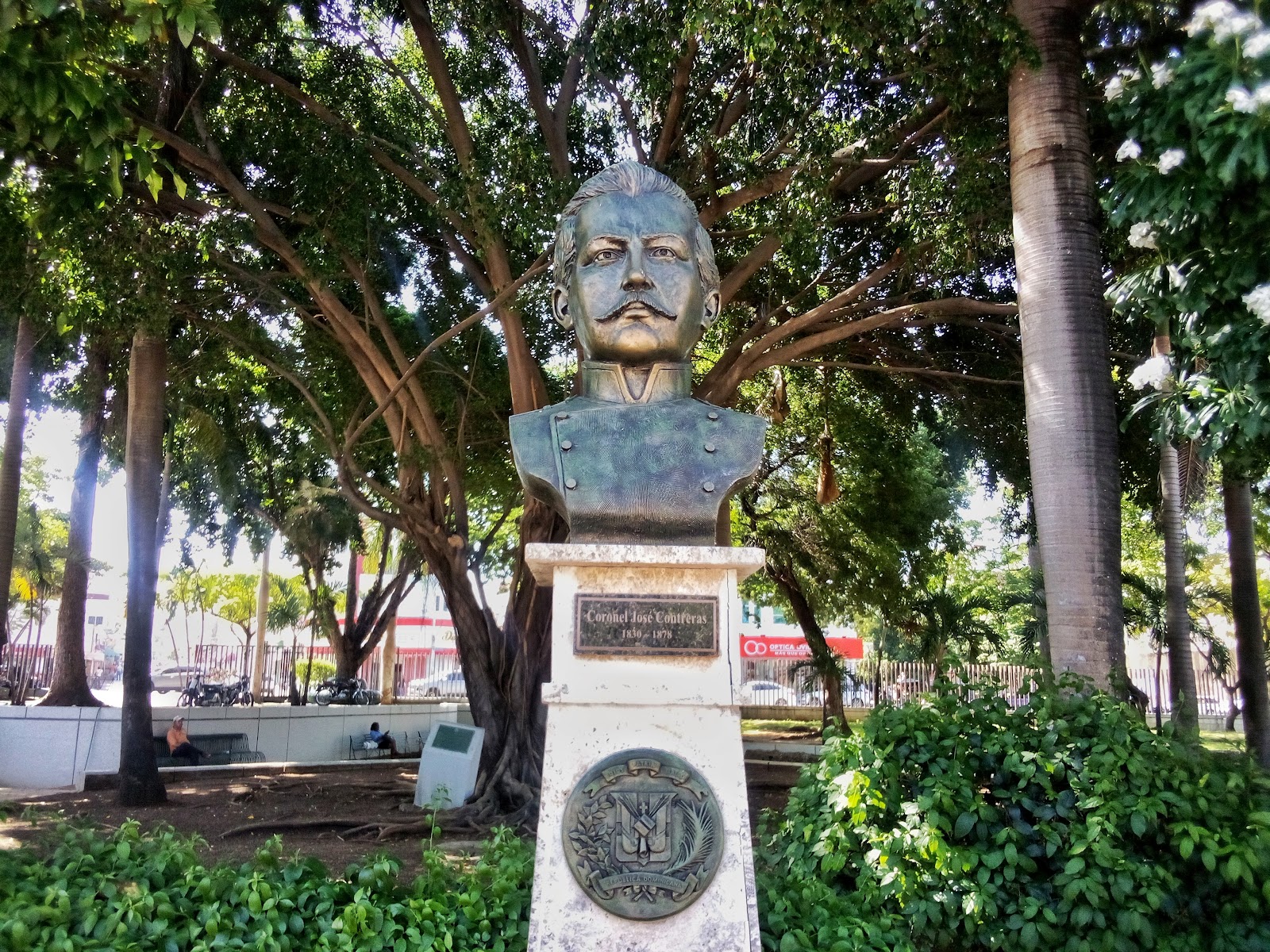Panteón de la Patria

In June 2023, during my trip to the Dominican Republic, I visited Panteón de la Patria [Pantheon of the Fatherland] in Ciudad Colonial, Santo Domingo. Also called the National Pantheon, this giant mausoleum and sculpture park serves as the final resting place for the founders of the country. While the busts of heroes make the memorial similar to the plazoletas, escaleras, and museo at Monumento a los Héroes de la Restauración [Monument to the Heroes of the Restoration] in Santiago de los Caballeros, the atmospheres of the locations greatly differ. Monumento is a place to go on a date; Panteón is a place to pay respect.



Jesuit monks construected the original building between 1715 and 1745 as Convento de San Igancio de Loyola. Their chosen architectural style, with its many decorative elements, make it a Rococo or Late Baroque convent inspired by French cathedrals. This is unique for Dominican buildings, as these are more likely to be Spanish Gothic with Mudéjar elements inspired by Arabic or Moorish mosques. After the expulsion of the Jesuits in 1767, the poor building stored tobacco, hosted theater productions, and served as government offices. Not until 1956, during the Trujillo Era (1930-1961), was the original building restored, a modern building added to the site, and turned the site into a national mausaleum. Trujillo himself is not buried here — in fact, his body was sent to Paris for burial — but his assassins are interred on the property. In 1994, Comision Oficial para la Celebration del Sesquincentenario de la Independencia Nacional [Official Commission for the Celebration of the Sesquincential of National Independence] planted a laurel tree that now threatens to topple its accompanying commemorative plaque.


Those familiar with Dominican history will quickly identify several of the busts and statues in the area. Inside the main building are three statues representing the founders of the Dominican Republic. In the middle stands Juan Pablo Duarte, “Padre de la Patria” [Father of the Fatherland]. On the right is Matías Ramón Mella, and on the left is Francisco del Rosario Sánchez. Both were mentees of Duarte and served as politicans after the War of Independence during the First Republic (1844-1861). A local historian at the site noted that volunteers place fresh floral wreaths in the mausoleum each day. Visitors look down to an eternal flame atop a stone memorial with the surnames of the three men.



Away from the courtyard stands a statue of Dona Manuela Díez de Duarte, the mother of Juan Pablo Duarte who was exciled to Venezuela for her support. Meanwhile, twin rows of busts line the walkway to the mausoleum, each depicting a Dominican patriot. General Gregorio Luperón, whose house I visited a few days before, was a military leader during the Restoration (1862-1865) and wears his signiture hat. His bust might be confused with General Anonio Duvergé, a French-Dominican military leader from the War of Independence. Another leader, Cayetano Germosén, led patriots defending Santiago de los Caballeros during during the Restoration and now has a town named in his honor.




Women played a major role in the War of Independence and the Restoration, so several are honored at the National Pantheon. Rosa Montás de Duvergé, wife of the general, provided medical aid to fighters during the War of Independence and outlived her husband to see the Restoration. María Trinidad Sánchez designed the Dominican flag and was executed for her part in the War of Independance. A park named in her honor is part of the ChuChu Colonial route. Rosa Duarte Díez, the younger sister of Juan Pablo Duarte, worked alongside other patriots during the War of Independence. She spent most of her life in exile in Venezuela. Juana de la Merced Trinidad, nicknamed “Saltitopa” [Jumping Girl] and “La Colonela” [Lady Colonel], was patriot during the War of Independence who quickly rose to the role of military leader. Another bust of her is at Fortaleza San Luis in Santiago.




Ulises Francisco Espaillat, depicted as wearing his signature glasses, was a French-Dominican writer and politician during the Restoration. He was a close friend of Luperón, and the Dominican province of Espaillat is named after him. General Tinoteo Ogando worked with Luperón to lead Dominican troops against Haitians troops during the Six Years War (1868-1874), a civil conflict following the restoration. Cornel José Contreras is considered a martyr during the Restoration. He led a famous uprising against Spain on May 2, 1861 and was executed eighteen days later. Vicente Celestino Duarte was the supportive older brother of Juan Pablo Duarte during the War of Independence and was forced into exile in Venezuela like many in the Duarte family.




This monument was well-kept and filled with history, although the experience was not uplifting. Busts did not have informational signage besides a name and dates, so visitors discovered more about the patriots on their own after the visit. The grounds wereaccessible only by steps, with additional steps to go inside the mausoleum. Visitors respectfully covered themselves when entering the space, and the soldiers guarding the entrance gave a cloth to cover the legs of anyone wearing short shorts, especially younger women. Panteón de la Patria was a quiet stop for anyone looking for a rest or highly invested in Dominican history, the perfect destination for the end of a trip to Santo Domingo after learning the timeline and notable figures.
Abby Epplett’s Rating System
Experience: 8/10
Accessibility: 6/10